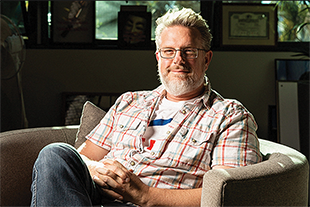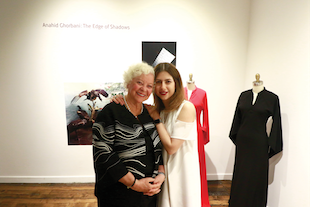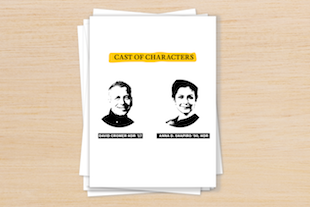Alumni Shorts
Alumni updates at a glance.
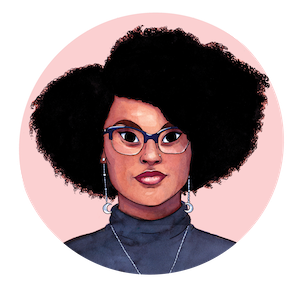
A STORIED HISTORY
Vulture writer ANGELICA JADE BASTIÉN ’12 reflects on three pieces of formative media.
As a staff writer for New York Magazine’s culture site, Vulture, Angelica Jade Bastién ’12 explores everything from the newest season of Riverdale to her deep obsession with Keanu Reeves. We asked her to reflect on three pieces of media that shaped her love of storytelling and her successful writing career.
1. In a Lonely Place
I don’t remember the first time I saw Nicholas Ray’s dark 1950 gem In A Lonely Place, starring Humphrey Bogart and Gloria Grahame. But I remember the impression it left: Bone-chilling recognition. Bogart plays Dixon Steele, an impossibly named, down-on-his-luck screenwriter with a mordant air and the sort of wit that can be easily confused for cruelty. Bogart and I are separated by time and space, race and class, political outlooks, and personal philosophies. Yet in him, I see a bit of my own journey wrestling with the beasts of madness and anger.
2. The Devil Finds Work by James Baldwin
In the pages of James Baldwin’s The Devil Finds Work, an incisive work of film and cultural criticism, I see the kind of art I aim for. Baldwin proves that criticism can be an art of its own as he threads in historical considerations, cultural insights, and memoir—using film as the lens. This is the lofty aim I have held myself to when I was juggling multiple low-paying jobs between freelancing, and still hold today as a staff writer for Vulture.
3. The Bloody Chamber by Angela Carter
My desire to both seduce and challenge readers likely comes from my longheld obsession with Angela Carter’s The Bloody Chamber. This 1979 short story collection takes familiar fairy tales—Little Red Riding Hood, Bluebeard, Snow White—and sets them aflame with bold considerations of power, desire, and womanhood from a perspective that is fiercely feminist. Every time I feel creatively stymied or I doubt why I write, I open up the pages of The Bloody Chamber as a reminder: To make sense of the chaos of my mind and find my place in this world, even if it’s just on the page.
KEEPING SCORE
Hollywood composer JESI NELSON MFA ’15 scores a scene from her life.
Jesi Nelson MFA ’15 composes full-time in LA and has worked on popular animations such as Ninjago: The Legend of Spinjitzu and Lego Starts: The Freemaker Adventures series as well as several indie productions. In December 2018, the director of Sundance’s music program selected Nelson to teach an animation-scoring workshop in Israel. While she and her colleagues were dining in Tel Aviv in March, a missile attack from Gaza forced everyone into the city’s state-mandated bomb shelters. The authorities gave the all-clear after 10 tense minutes, and life returned to normal. But for the moment, it was like a scene out of a movie. This is how she would score it.
“[I would score it from] my perspective, which was this mute moment where I’m watching everything happen around me, and I’m still for whatever reason quite calm. So there would be this droning, then the sound drops out. I would stick to snyth tones and [electronic] pads, and then I would probably bring in strings, but I wouldn’t do anything aggressively because I think the best way to score it would just be in a sort of empathetic way. I wouldn’t do brass and percussion because I feel like it would take away from the importance of the moment and the reality that this is something that happens all the time."

TINY BOOK, BIG CITY
Artist MAURA WALSH ’11 captures Chicago’s massive music scene in a mini sketchbook.
Artist and illustrator Maura Walsh ’11 has completed multiple sketchbooks as part of the Brooklyn Art Library’s “Sketchbook Project.” The library distributes, collects, and archives sketchbooks from around the world for their permanent collection in Brooklyn, New York.
Walsh’s latest contribution is “Our Tiny Guide to Chicago’s Best Music Culture Spots,” a tiny sketchbook (2.5” x 1.75”) that was conceived as a guide to Walsh’s favorite music venues in Chicago. A video of the “Tiny Guide” that Walsh posted on her Facebook page has been viewed more than 20,000 times, and the sketchbook has been featured in local publications such as Block Club Chicago.
Since music plays a large role in her life and art, we asked Walsh what the soundtrack to “Tiny Guide” would sound like.
1. Daughters: “City Song,” You Won’t Get What You Want
(Seen at Beat Kitchen and Bottom Lounge)
2. Drug Church: “Attending a Cousin’s Birthday Party,” Paul Walker
(Seen at Cobra Lounge)
3. Gouge Away: “Uproar,” Dies
(Also seen at Cobra Lounge)
4. Xiu Xiu: “Grey Death,” Dear God, I Hate Myself
(Seen at Empty Bottle, Metro, Lincoln Hall, and more)
5. The Body: “Nothing Stirs,” I Have Fought Against it, But I Can’t Any Longer
(Seen at the Empty Bottle with Uniform)
DESIGN IS IN THE DETAILS
Graphic designer EAVAN WALLNER ’14 discusses her latest project: the Google Hardware Store.
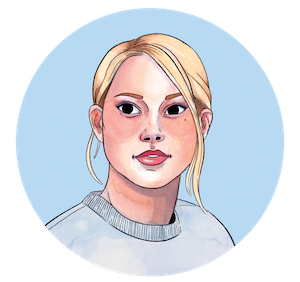
Not even a year into her tenure as a designer for Google’s Events + Experiences department, Eavan Wallner ’14 was tasked with creating the look of the tech giant’s latest venture—the Google Hardware Store. The pop-up retail experience showcases Google’s three hardware products: the Pixel phone and tablet, and the Google Home Hub smart speaker.
Wallner became the design lead for the project, and her team set forth to create an “experiential and joyous” space.
• Wallner’s team was responsible for modeling the store’s visual concept, from defining the overall look and feel of the space (long, blonde wood tables and concrete floors), down to designing the smaller details like the carry-away tote bags.
• Google Hardware’s newest location in Chicago’s Bucktown neighborhood has features such as a prop kitchen outfitted with a Google Home Hub that opens drawers, a “treehouse” with a Nest doorbell that adjusts lights and temperature, and an Instagram-friendly photo station that invites guests to test Pixel’s Top Shot feature.
• While Wallner had never given design feedback before and had no formal 3D or interior design work experience, she and her “scrappy” internal design team were able to make the best of it. “[Our team] gave me the chance to flex outside of traditional graphic design and help shape the overall space,” says Wallner.



